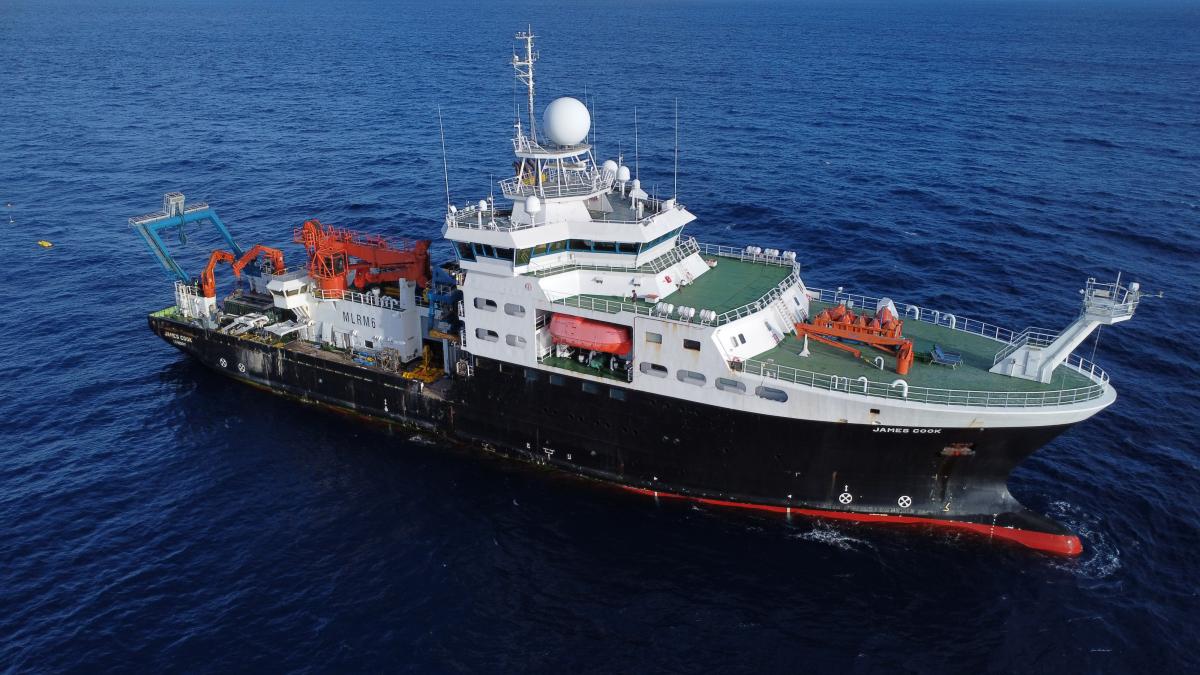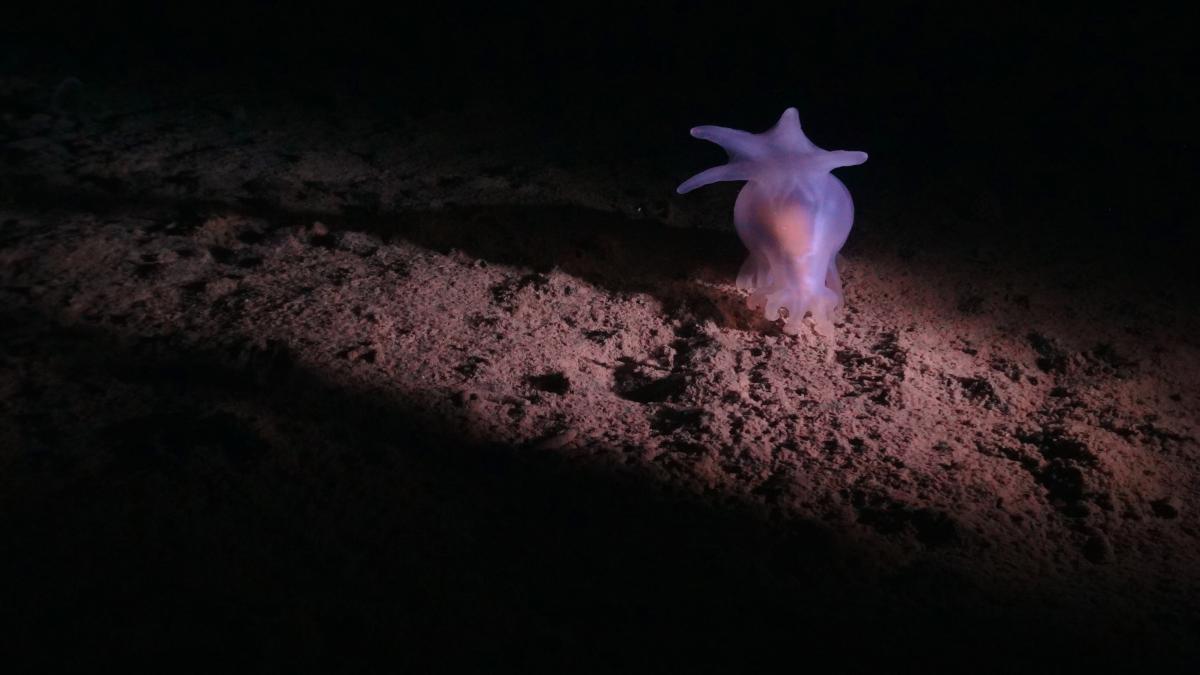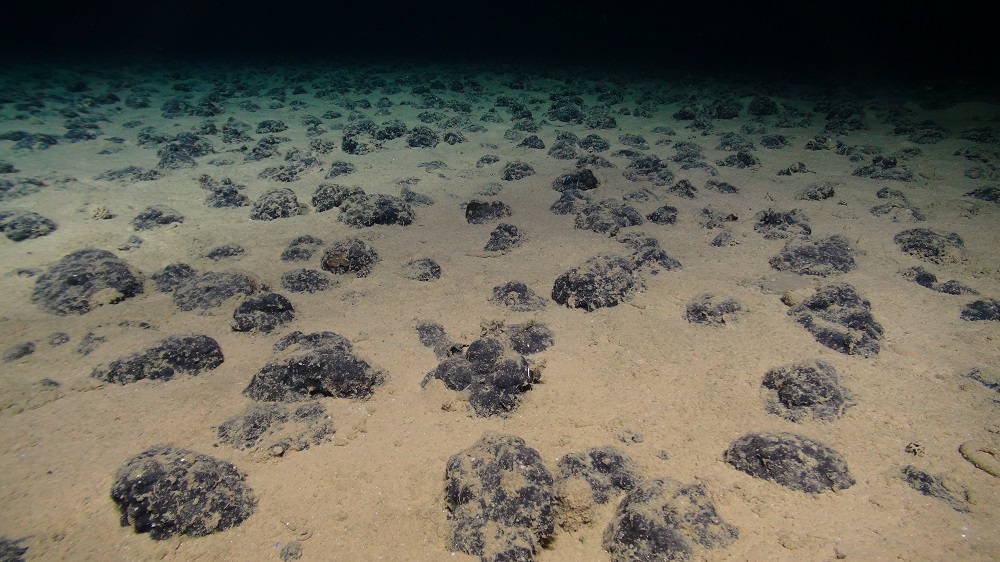
A brand-new study led by the UK’s National Oceanography Centre (NOC) has revealed the long-term impacts and the first signs of biological recovery in seabed mining tracks, 44 years after deep-sea trials in the Pacific Ocean.
The findings, published today (Wednesday 26 March) in the scientific journal Nature, provide critical evidence to the global deep-sea mining debate.
The concerns around deep-sea mining and the impact on the marine environment are heightened by a lack of evidence and understanding of the long-term recovery of the ecosystem. A team of scientists, led by Professor Daniel Jones at NOC and co-led by the Natural History Museum, recently visited a previously mined site in the Clarion Clipperton Zone (CCZ) to investigate if recovery is possible and what impact remains 44 years after the machines left.
The international team of researchers found that mining has clearly caused long-term changes to the sediments, but the effects on the animals living at these depths are more variable.
Lead author and expedition leader, Professor Daniel Jones of the National Oceanography Centre, explains: “To tackle the crucial question of recovery from deep-sea mining, we need first to look to the past and use old mining tests to help understand long-term impacts. 44 years later, the mining tracks themselves look very similar to when they were first made, with an 8-metre-wide strip of seabed cleared of nodules and two large furrows in the seafloor where the machine passed. The numbers of many animals were reduced within the tracks but we did see some of the first signs of biological recovery.”

“We found some recovery of small and mobile animals living on the sediment surface. A type of large amoeba-like xenophyophore, creatures commonly found everywhere in the CCZ region, had recolonised the track areas. However, large-sized animals that are fixed to the seafloor, are still very rare in the tracks, showing little signs of recovery.”

The team also discovered that sediment plumes, previously considered to be a likely major impact on the seafloor community, had limited long-term physical impacts and no detectable negative effects on animal numbers in the study.
“The evidence provided by this study is critical for understanding potential long-term impacts. Although we saw some areas with little or no recovery, some animal groups were showing the first signs of recolonisation and repopulation.” said Prof. Jones.
Co-author, Dr Adrian Glover, from the Natural History Museum, said: “General ecological theory will predict that following disturbance, any ecosystem will go through a series of successional stages of recolonisation and growth. However, until this study, we had no idea of the timescales of this critical process in the deep-sea mining regions, or how different parts of the community respond in different ways.”
“Our results don’t provide an answer to whether deep-sea mining is societally acceptable, but they do provide the data needed to make better informed policy decisions, such as the creation and refinement of protected regions and how we would monitor future impacts.”
Deep-sea mining is increasingly being considered as a potential solution to supply the crucial metals required for advancing global technology and driving the transition to a net-zero energy future.
A key area of interest for mining is the CCZ, a vast region in international waters of the Central Pacific Ocean. Spanning over 6 million square kilometres, approximately 25 times the size of the UK. It is home to unique and biodiverse deep-sea creatures, many yet to be described by science, as well as a rich mineral resource of polymetallic nodules, highly enriched in metals. At depths of nearly 5,000m on the seabed of the CCZ, the abundant potato-sized rocks represent one of the most promising deep-sea mineral resources.
The International Seabed Authority (ISA), established in 1994 under international law, is deciding whether to allow deep-sea mining in the region and under what conditions. A key question in this decision, is whether deep-sea ecosystems can recover from mining disturbances.


Image credits: National Oceanography Centre and Trustees of the Natural History Museum, with acknowledgement to the NERC SMARTEX project
In the 1970s, the first industrial trials of deep-sea mining were carried out in the Pacific. It was this site that Prof. Jones and his team visited in 2023, onboard the world-class Royal Research Ship James Cook, equipped with the cutting-edge underwater robot submersible Isis, to explore and study the aged mining tracks deep beneath the ocean’s surface.
The study forms part of the NOC-led Seabed Mining and Resilience To EXperimental Impact (SMARTEX) project, funded by the Natural Environment Research Council (NERC). All the data collected is made available to all stakeholders in order to guide future policy decisions by the ISA and the nation states involved.
[ENDS]
Press enquiries
For further information, images and video, please contact Jess Allen at: media@noc.ac.uk
About the National Oceanography Centre (NOC)
The UK’s National Oceanography Centre (NOC) is one of the world’s top ocean research institutions. NOC work around the globe from the coast to the deep ocean, delivering world-class agenda-setting scientific research and technology development. NOC underpin international and UK public policy, business, and societal outcomes by solving challenging multidisciplinary, large-scale, long-term marine science problems. NOC operates the Royal Research Ships James Cook and Discovery and develops cutting-edge technology for coastal and deep ocean research. Working with its partners NOC provides long-term marine science capability, including: sustained ocean observations, mapping and surveying; data management and scientific research and advice.
Among the resources that NOC provides on behalf of the UK are the British Oceanographic Data Centre (BODC), the Marine Autonomous and Robotic Systems (MARS) facility, the National Marine Equipment Pool (NMEP), the National Tide and Sea Level Facility (NTSLF), the Permanent Service for Mean Sea Level (PSMSL) and British Ocean Sediment Core Research Facility (BOSCORF). NOC is a company limited by guarantee set up under the law of England and Wales (11444362) and registered as a charity (1185265).
About the Natural History Museum
The Natural History Museum is a world-leading scientific research centre and one of the world’s most visited museums. Our mission is to create advocates for the planet – people who act for nature. Our 400 scientists are finding solutions to the planetary emergency - from reversing biodiversity loss to resourcing the green economy.